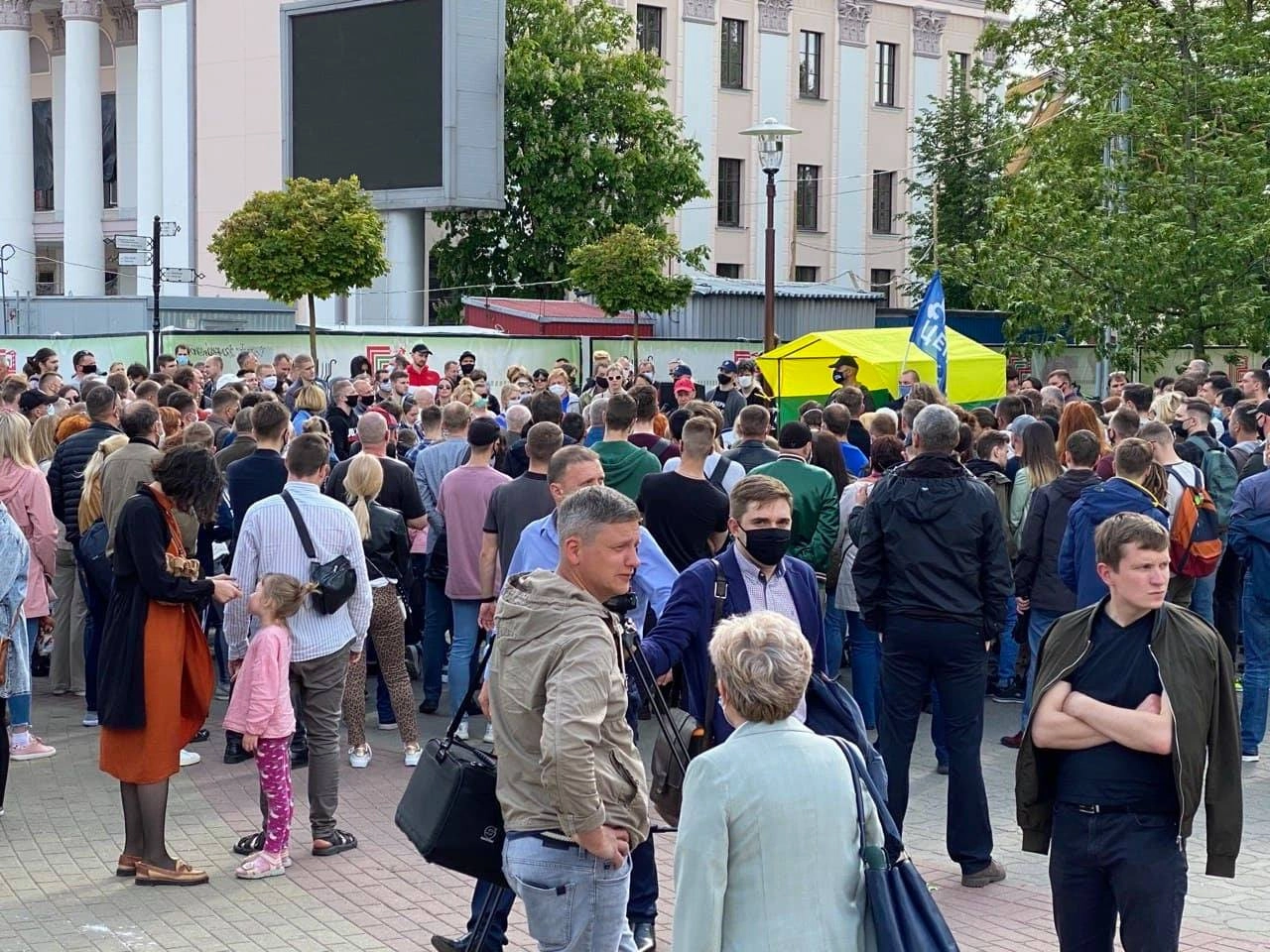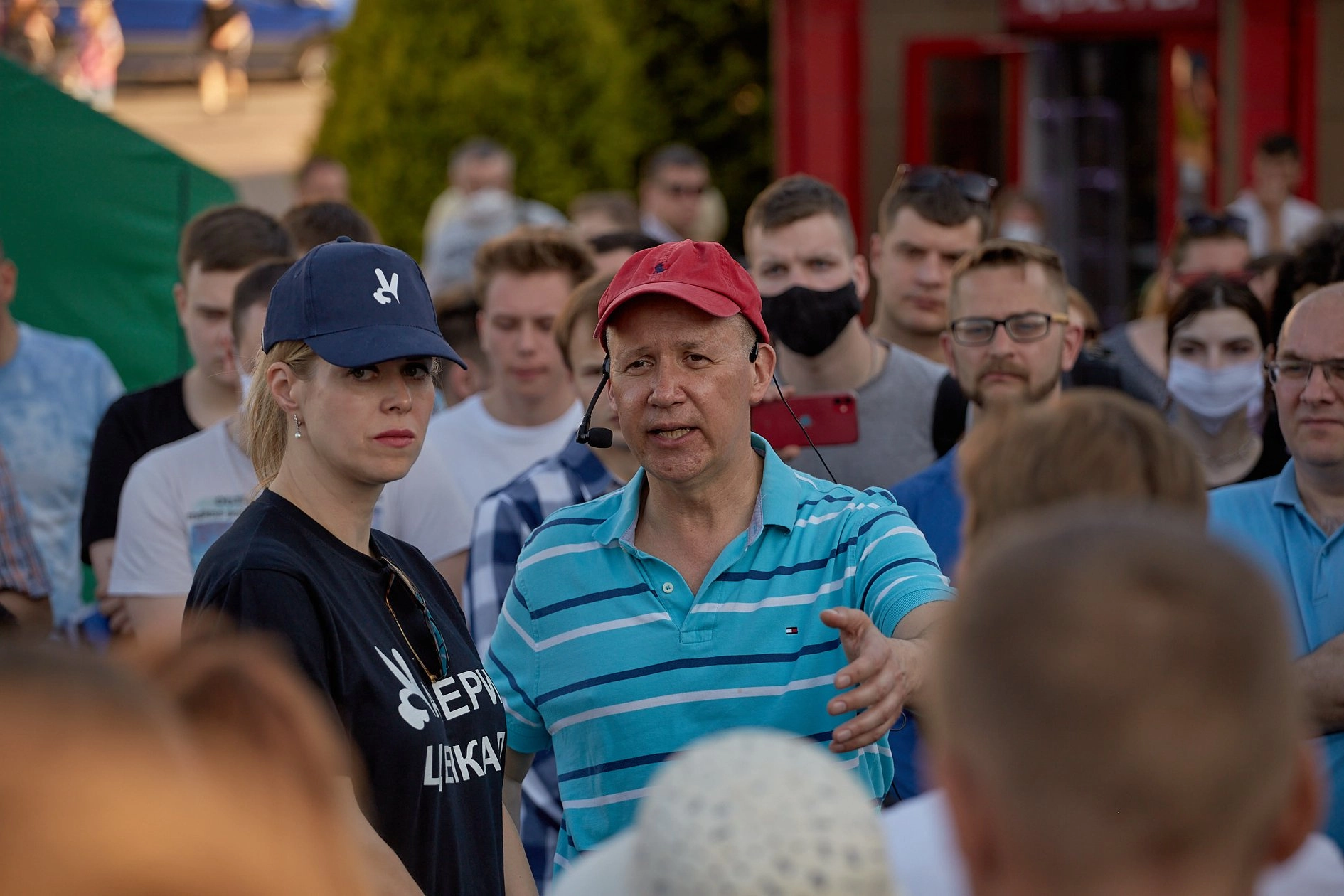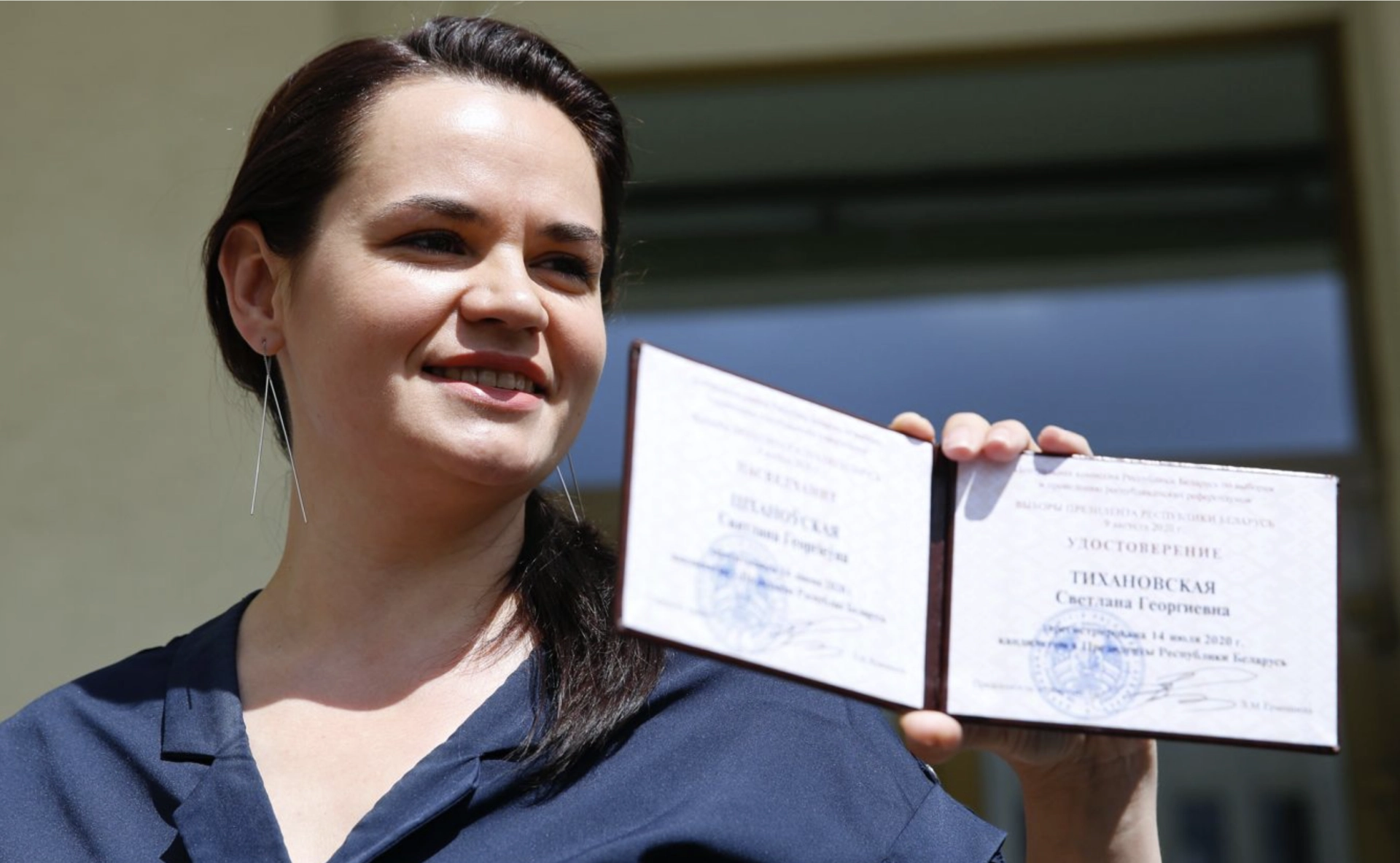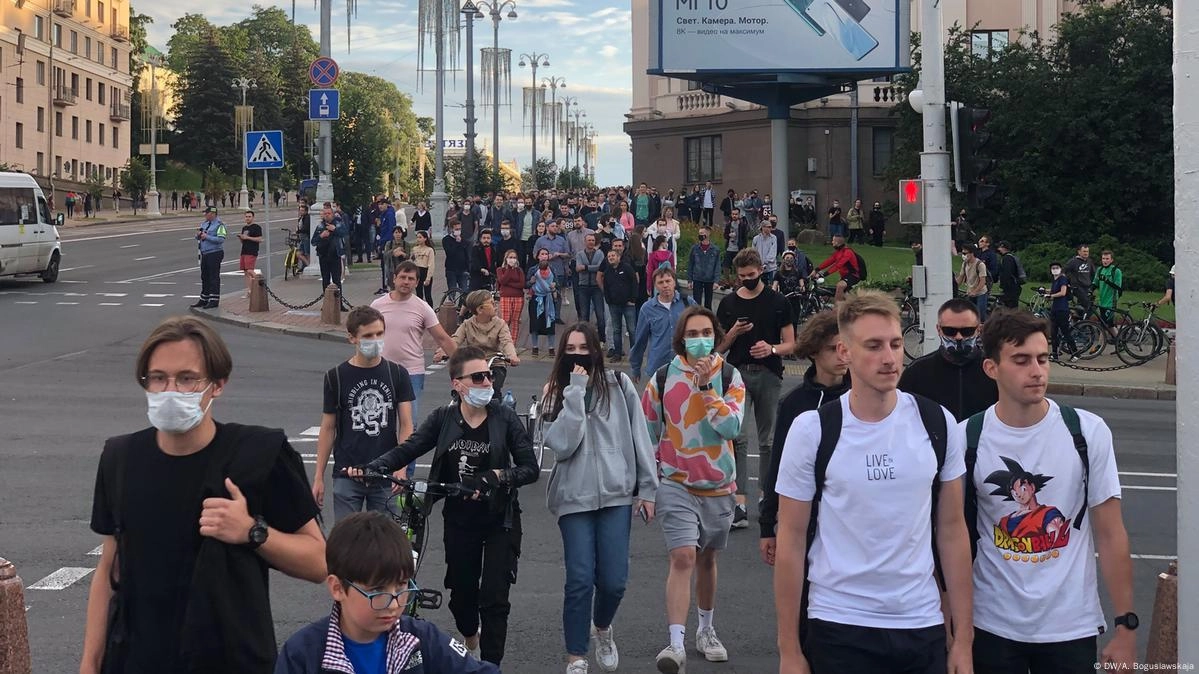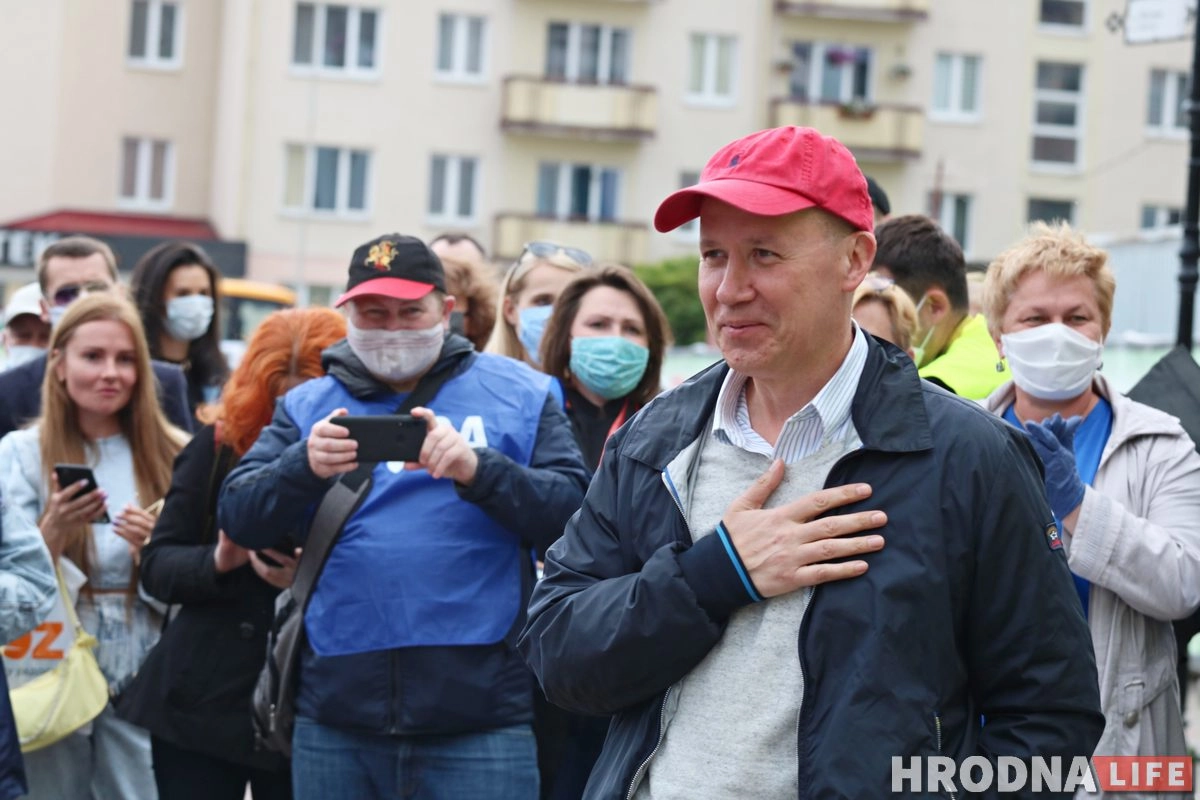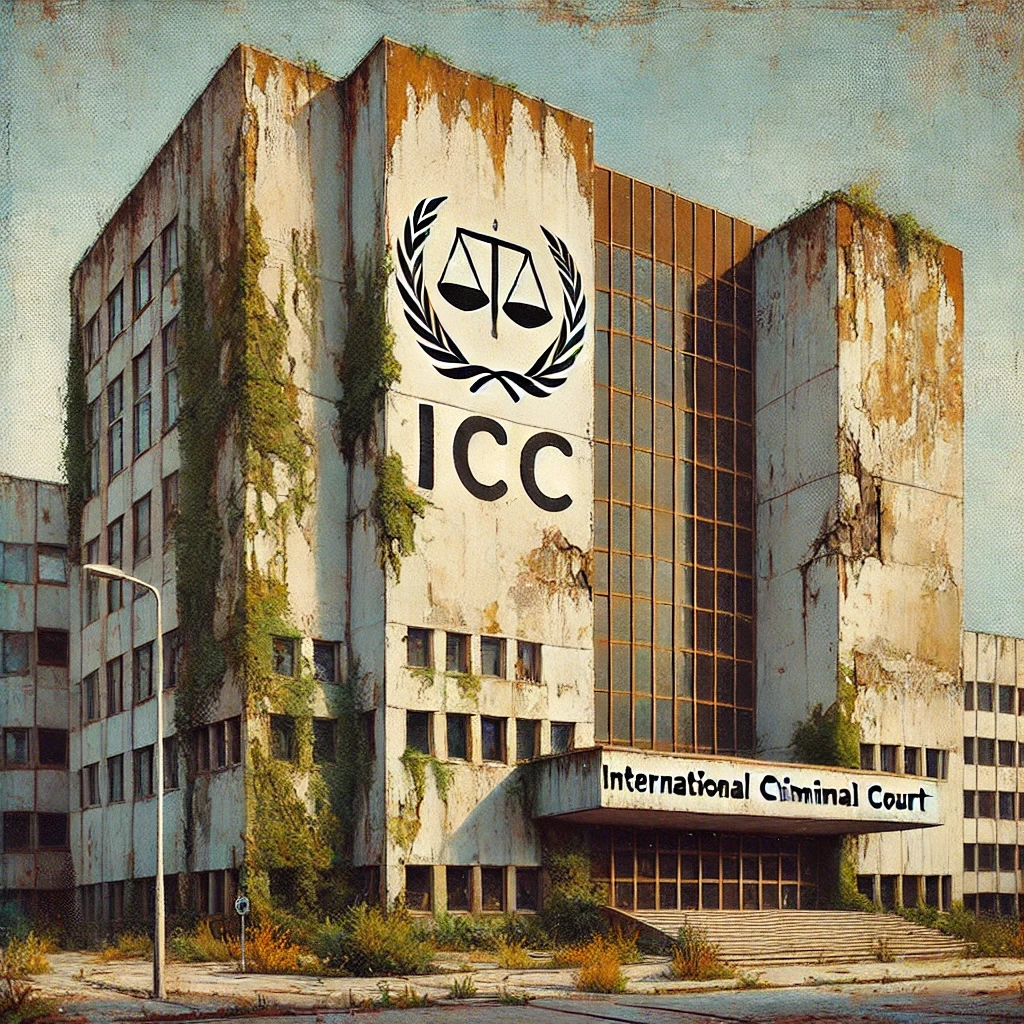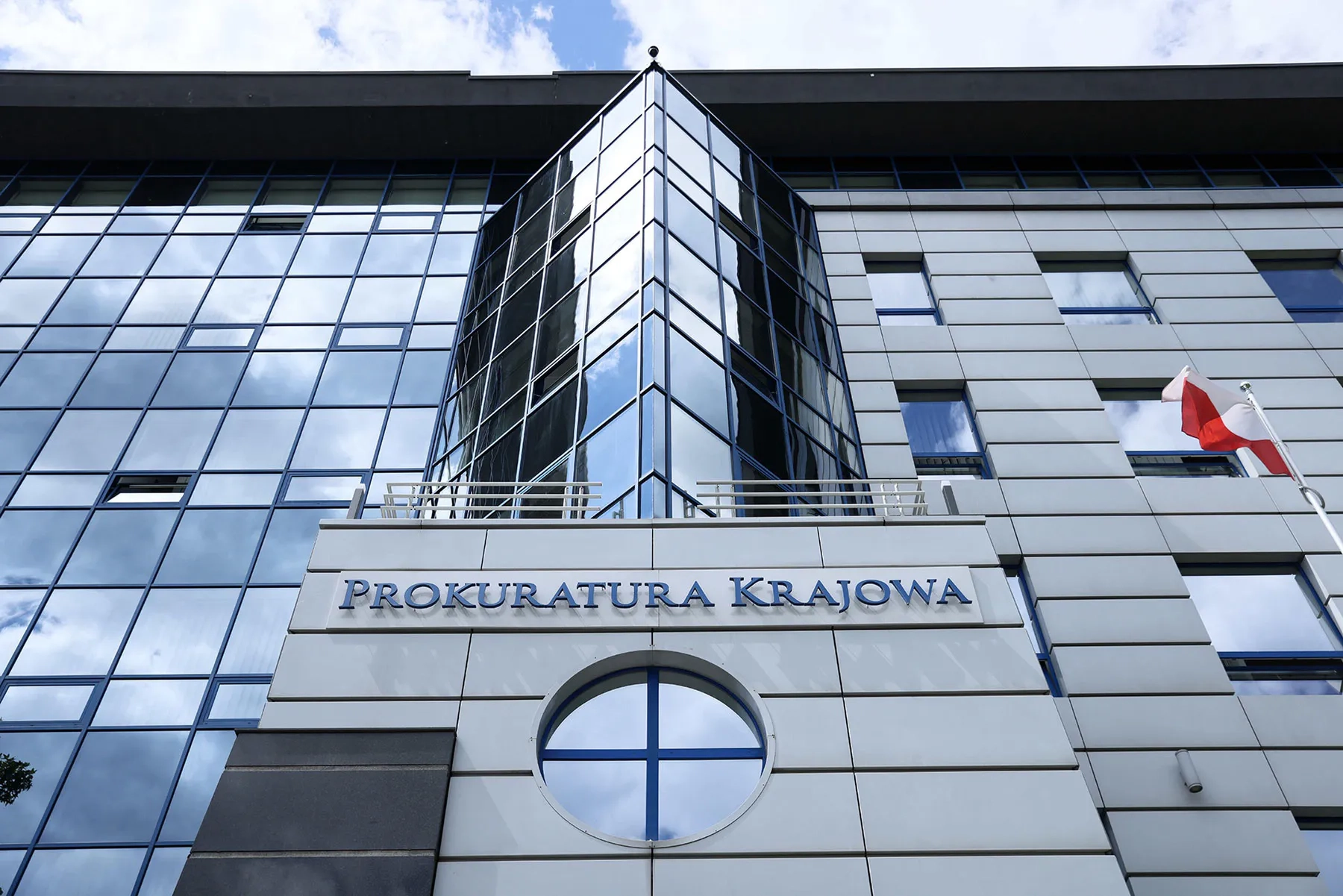As I’ve already noted, Belarusian electoral law in 2020 effectively stripped candidates of the right to campaign openly during the signature collection stage. You could not tell voters who you were, what you believed in, or what you hoped to achieve. Any attempt to share your vision risked being branded by the Central Election Commission as “illegal campaigning,” with the inevitable consequence of being removed from the race.
Yet, how was one expected to collect signatures under such restrictions?
At every rally organized by our team, I began openly encouraging people to sign for all opposition candidates — for Viktar Babaryka, for Sviatlana Tsikhanouskaya (who, at that time, appeared in public space only as a cardboard cut-out at her husband Siarhei’s pickets), and even for Alexander Lukashenko.
That last suggestion was, of course, a calculated diplomatic maneuver. We knew perfectly well there were no actual signature-collection pickets for Lukashenko anywhere in the country. In reality, there was nowhere a citizen could physically go to support his nomination. The formality of 100,000 signatures for him had already been “fulfilled” in advance by the Belarusian Federation of Trade Unions, which conveniently counted all of its three million members as having “automatically” signed on his behalf.
Legally speaking, what I was doing could be framed not as personal campaigning, but as supporting an open political process, genuine competition, and equal opportunity for all candidates.
But the reality was very different. Standing in front of voters, you could not avoid their questions — and if you answered honestly, you inevitably revealed your position on the most urgent and painful issues facing the country. In truth, it was political campaigning in every sense, only disguised under the legal fiction of the “signature collection procedure.”
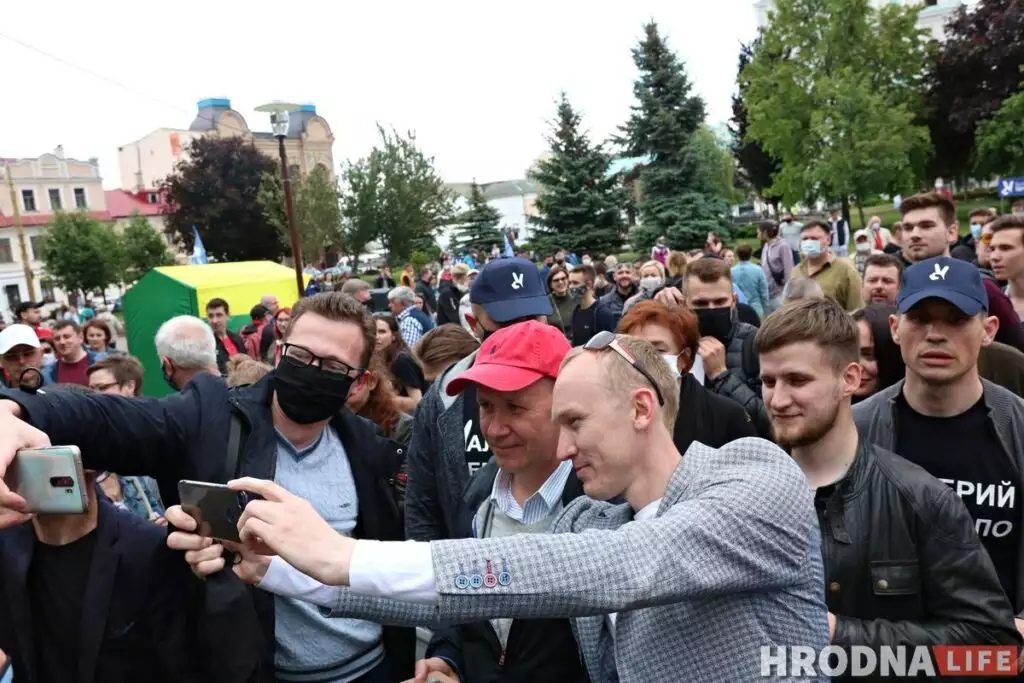
During my meetings with potential voters, I tried to convey the outlines of my program — a plan that could, within a short time, lift Belarus from poverty into the ranks of the world’s most developed nations.
This was not one of those abstract promises made by people who speak of golden mountains yet have achieved nothing of substance in their lives. I spoke from real, proven experience — the experience of creating the High-Tech Park, the most successful economic project not only in modern Belarusian history, but in all of Central and Eastern Europe.
Under my leadership, the average salary in the IT sector grew from $500 to $1,800 within the first five years, and in the following five years it rose further to $2,300. The number of IT specialists expanded from just 1,700 to 75,000 in a single decade — and most of them were young people trained from scratch. The average age in the sector was only 27.



In photos – a symbolic tree planting ceremony marking the completion of the High-Tech Park Educational Center.
I told people that the same transformation we achieved in the IT sector could be applied to the entire Belarusian economy — from manufacturing to agriculture, from logistics to creative industries. The formula was simple, but it required political will: open markets, real competition, incentives for innovation, and an end to the suffocating control of the state over every productive initiative.
I explained that our country had all the prerequisites for success: a well-educated workforce, advantageous geographical position, and untapped potential in industries that could compete globally — if only they were freed from bureaucratic sabotage and corruption.
We could create conditions where a talented engineer in Zhodino or a designer in Brest would earn not $500 a month, but $5,000 — just as IT specialists had under the High-Tech Park model. We could see regional cities grow into modern, vibrant hubs with thriving businesses, clean streets, safe neighborhoods, and opportunities that would make young people want to stay, not flee.
And I emphasized one thing above all: this was not a dream. We had already done it once. We could do it again — for the whole of Belarus.
The success of Belarus HiTech Park was the result of a well-conceived and successfully implemented strategy—the same one I once described in detail to Kazakh IT development historian Ildar Daminov. That conversation became the basis for a dedicated publication that we began but never had the chance to finish—one we will present in the very near future. It was precisely this experience that gave me the right to propose a national plan for economic growth—because I knew how to turn an idea into tangible results.
As Peter Thiel—Elon Musk’s partner and PayPal co-founder—wrote in his book Zero to One, the hardest part of any project is not scaling it after the product exists and starts generating profit, but making the very first leap: from zero to one, when the product doesn’t yet exist and its prospects are uncertain. “The path from zero to one is harder than from one to a hundred, or even from one to a thousand,” Thiel noted.
That leap—from zero, without resources, without backing, without guarantees—I had already made when creating the High-Tech Park. And I knew exactly how to make it again on a national scale—faster and more effectively—if given the political, administrative, and financial tools.
At rallies, we spoke about many things. In Soligorsk, home to the famous Potash Plant, we talked about large-scale industrial modernization—through turning state enterprises into joint-stock companies and integrating them into major international corporations.
We spoke about fair privatization, where every Belarusian would own a share of the nation’s wealth. I proposed directing all privatization proceeds into a National Wealth Fund, in which every citizen would be a shareholder. Each Belarusian would receive a share from the sale of any enterprise. But more importantly, they would receive dividends from the export of natural resources—potash, timber, wood chips, sapropel, chalk. Everything the Belarusian land produces should bring income not to one family, but to all the people of the country.



Meeting with voters in Soligorsk, Minsk Region
Of course, this income could not simply be squandered. It could not be gambled away in a casino or spent on alcohol. It would be earmarked exclusively for socially beneficial purposes: building a house, purchasing an apartment, buying furniture, paying for education or medical services, or serving as supplementary pension support.
In Novogrudok, Grodno Region, we spoke about a land reform that could breathe life into dying villages and give a powerful boost to individual housing construction.
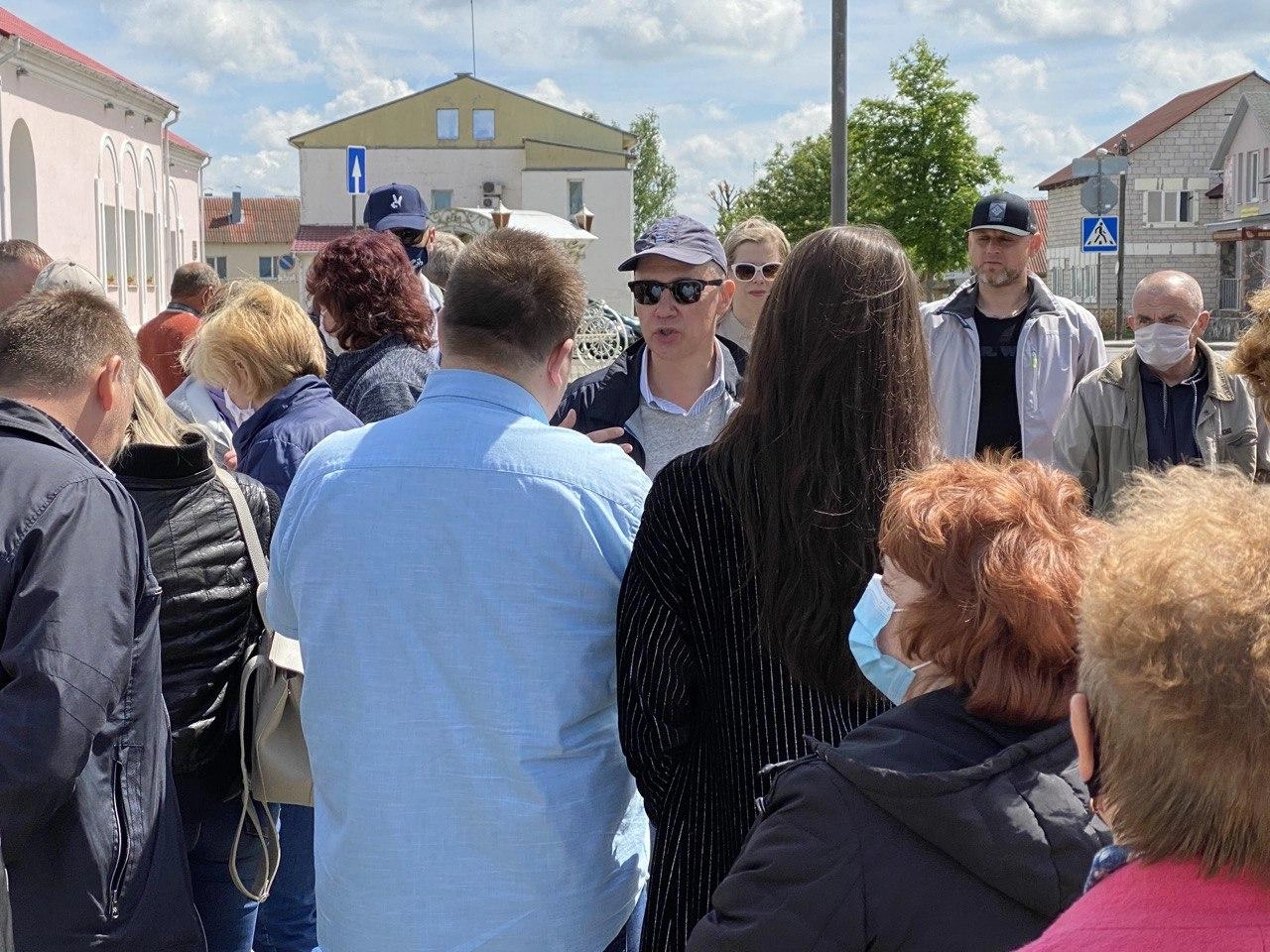
Meeting with people in Novogrudok, Grodno region
Belavia: The People’s Airline of a New Belarus
Back in 2005, when I had just begun building the High-Tech Park—registering its legal entity out of my own pocket—I noticed something that, at the time, seemed like a small detail but in fact had strategic importance. Travelers from Western countries were paying attention not just to which airline they were flying, but also to the specific aircraft model.
At that time, Belavia’s fleet did not include a single Western-made aircraft. Its flights were operated exclusively with Soviet-era Tupolev Tu-134 and Tu-154M and Jak-40 planes—heavy, noisy machines inherited from the USSR. When a Belarusian plane landed in a European airport, you could identify it before even seeing it—by the distinctive roar of its engines. It was, in a sense, the “sound brand” of our civil aviation.



Belavia fleet before modernization Jak-40, Tu-134, Tu-154M
I understood that this situation was holding back international business—especially in the tech sector, where trust, comfort, and safety are key. So I initiated Belavia’s transition to modern Western aircraft.
As far back as 2000, during my participation in a WTO summit, I met with then–Boeing president Philip M. Condit, who had overseen the landmark merger with McDonnell Douglas. He explained that Belarus, even with limited financial resources, could begin modernizing its fleet through operational or financial leasing. This opened the door to an upgrade without the immediate capital Belavia didn’t have at the time (just as the High-Tech Park started without reserves—I had to take out a $300,000 loan from Belarusbank at 17% interest to get it off the ground).
Acting on this, we launched a fleet renewal program, and for the first time in history, Belavia acquired modern American aircraft. This was the first real step toward making it a respected international carrier.
Fifteen years later, in 2020, I proposed the next step—transforming Belavia into a true people’s airline, in which every citizen of Belarus would be a co-owner. Each person would receive a personalized share, granting both legal rights in decision-making and a claim to profits—including revenues from Belaeronavigatsia, which earns from international air transit through Belarusian airspace.
This model would create a unique, direct link between citizens and the country’s strategic assets. If anyone ever attempted a reckless act—say, hijacking a foreign aircraft and jeopardizing Belavia and Belaeronavigatsia—it wouldn’t just be journalists showing up at the perpetrator’s door. Hundreds of thousands of shareholders—ordinary Belarusians—would demand accountability for a crime against their property, their interests, and their future.
With such a transformation, Belavia would strengthen its position as a national carrier, and Minsk could develop into a full-fledged international hub connecting Belarus with America, Europe, Asia, and the Middle East.
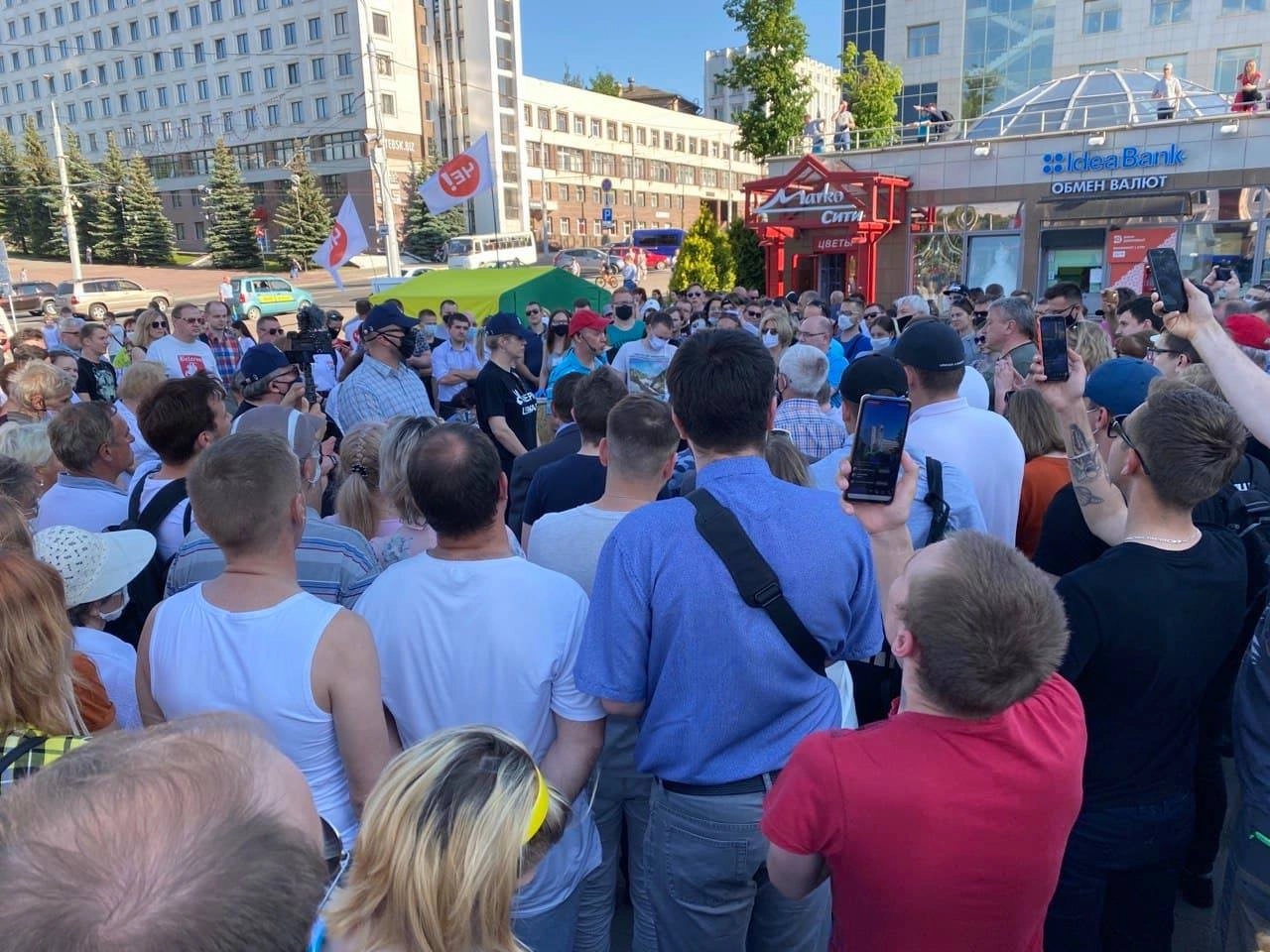
Meeting with people in Minsk
I noticed at the time that many U.S. airlines flying to Singapore made a technical stop at Moscow’s Sheremetyevo Airport for refueling. Minsk could have been the alternative—less congested, more convenient, with high-quality service and competitive rates. This would not have been just another transit point, but a new strategic role for Belarus in global logistics and the international economy.
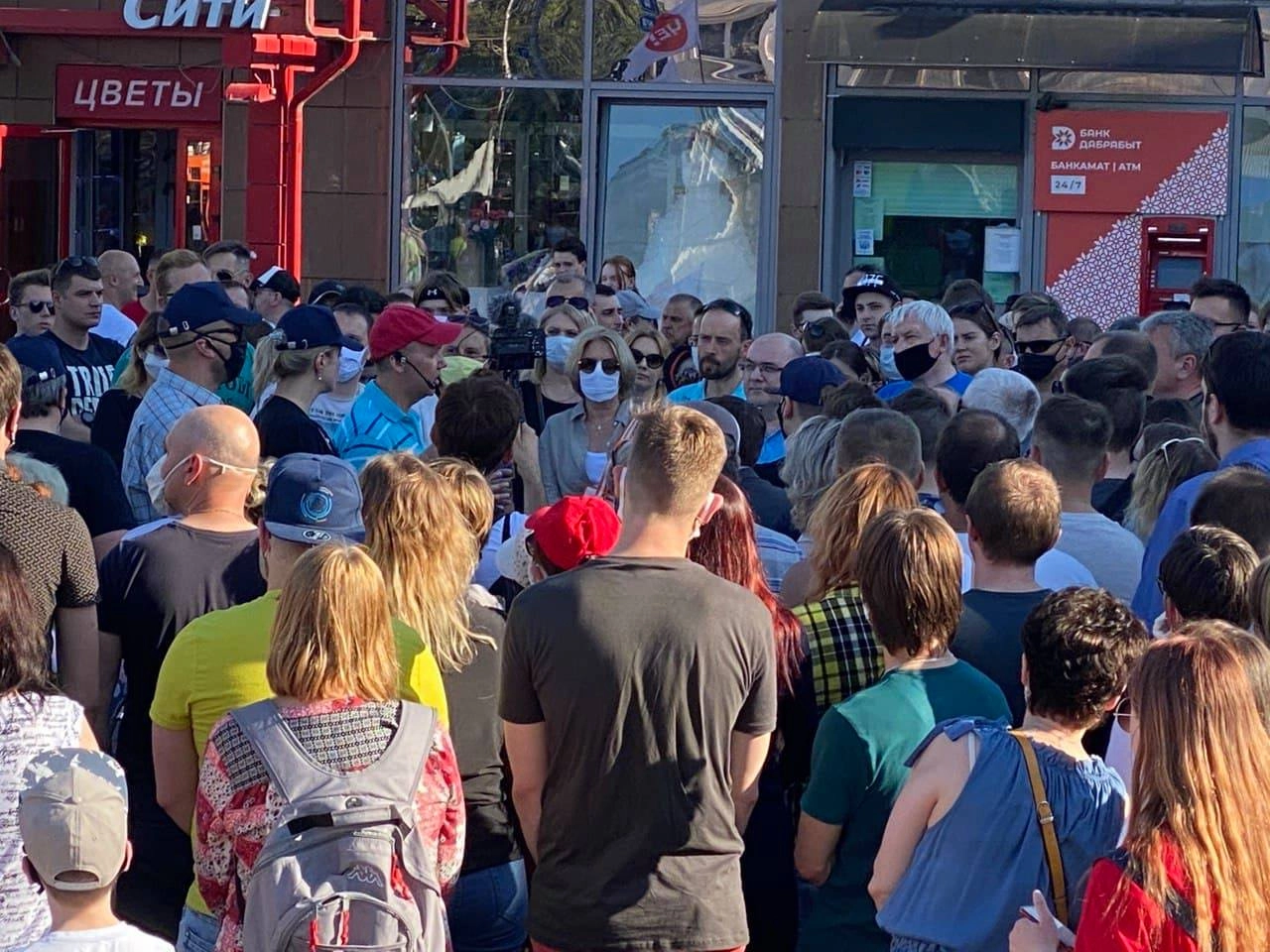
Step by step—beginning with a modernized fleet and moving to broad-based citizen ownership—Belavia could have become a symbol of a new Belarus: modern, open, connected to the world, and owned by its people.
But we never intended to stop there. Minsk matters, yes, but the core of our program was different: to breathe new life into the regional airports. Brest, Grodno, Gomel, Vitebsk, Mogilev—today these cities are effectively cut off from air travel. To reach Europe, people from Grodno drive to Vilnius; from Brest to Warsaw; from Gomel to Kyiv. Minsk is far, and the local airports are derelict: no routes, crumbling infrastructure.
This is what I spoke about at rallies in the regional capitals of Belarus, where people were thinking beyond their own doorstep and wanted their cities to grow—and their citizens to prosper.



Meetings with people in Brest
Meeting with people in Grodno



Meetings in Grodno
The first step would be joining the Open Skies Agreement. This would open Belarusian airspace not only to low-cost carriers—Ryanair, Wizz Air, easyJet—but, more importantly, lay a solid foundation for investment in regional infrastructure.
Flying to Europe for €25–50 would no longer be a dream, but a normal part of life. Even more importantly, it would enable a domestic small-aviation network: regular flights between regional capitals, from Grodno and Brest to Vitebsk, Mogilev, Gomel. Such connections would become routine and affordable for everyone.
Belarus would open its doors to Europeans. This would give a powerful boost to the hospitality and restaurant industries in the regions, breathe life into small and medium-sized towns, and create new opportunities for trade, entrepreneurship, and investment.
To be continued
